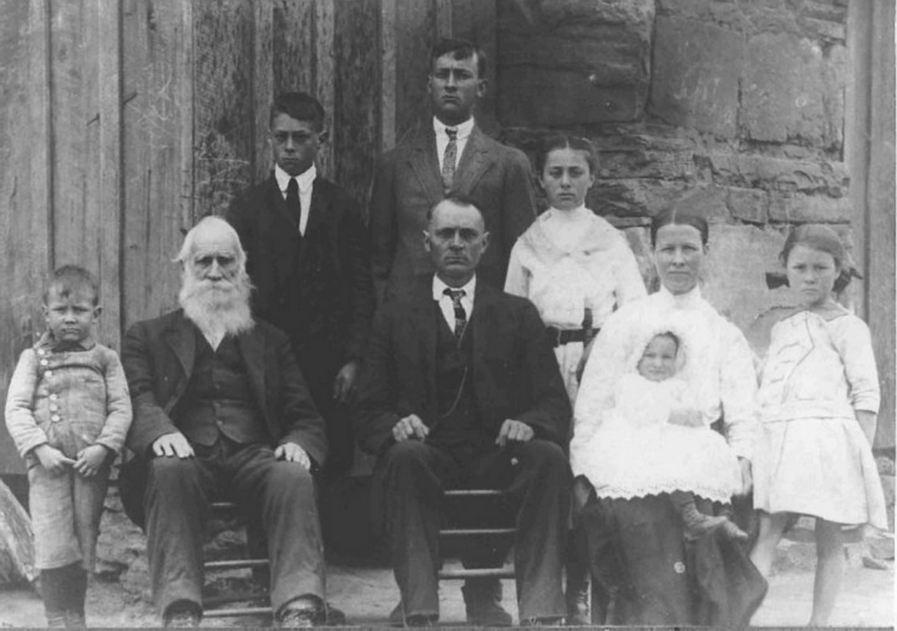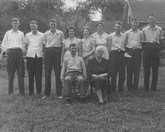Creating Quality
Transcriptions
 Print This Page Print This Page
The idea seems simple enough. There are words on one object. Someone just copies
those words on another object. In practice - it never really works out that way. There
are many reasons for this. Some are preventable. Some are not. But they all
should be considered when creating and using transcriptions. Poor transcriptions can result
in years of wasted research time following an unacceptable number of errors. These unreliable
transcriptions become mere indexes for locating additional information, if it still exists.
But the person who takes the time to provide a quality transcription of a document will always find
an appreciative audience while providing a valuable research resource. When beginning a
transcription project, there are a few basic issues to keep in mind to make the result as helpful
as possible.
Readers are not Psychic
The transcribed version will never look exactly like the original. The transcriber often
knows more about the document than is on the paper. The reader may want to see the original
to double check a questionable character or see what kind of paper was used. A brief
description of the document and transcription methods provides this information. It should
include:
- Basic description of the document. Purists will include measurements. Probably
more important are notes about its condition and legibility.
- Location of the original document with as much detail as possible. If the document is
located in an archives the accession number or name should be included. The archivist can
help provide this. If it is in someone's personal possession, provide a name and
address.
- Description of transcription methods. A note that "original spelling and syntax
retained" will let readers know that you really do know how to spell and further more that you
are familiar with proper transcription techniques. Also describe methods used to
designate additional information provided by the transcriber.
- Additional information about the historical context of the document. If it is
undated, do you know an approximate date? How do you know? If it is a store ledger,
where was the store? Information about the creator of the original document should also
be included.
- The transcriber and the date of the transcription.
Illegible Originals
This happens frequently. Handwriting styles change. Penmanship and education vary
greatly. Documents become damaged with ink spills, mold, and critter nibbling sessions.
The ability to read the older handwriting styles improves with experience. There isn't much
anyone can do about the other factors. When in doubt, a questionable character is normally
underlined or otherwise designated in the transcription to let readers know it may not be
correct. If a character is completely illegible, transcribers can leave an underscore in its
place or an editorial comment in parenthesis such as (hole in page).
School Teacher Approach
Spell check programs and the Microsoft interpretation of English grammar are very new.
Standardization of these subjects is also relatively new. Older approaches of spelling words
phonetically and working out grammar with a somewhat minimalist approach to punctuation and
conjugation were quite acceptable in the past. It is unfair to judge earlier authors by
current standards. In addition, individual quirks and variations provide important
information about speech patterns and education opportunities. The best way to announce to
the world that a transcription has reliability problems is to include a note to the effect of "The
spelling errors have been corrected." Perhaps worse, is "correcting" the non-standard
spellings without warning anyone. There is a transitional approach of maintaining the
original but inserting (sic) after every instance of non-standard usage. This will annoy the
daylights out of readers since it can result in several interruptions per sentence in some
cases. Just leave it as is and move on.
Correcting History
At times, documents contain errors. Researchers often will have encountered additional
sources that reveal these errors, or at least some discrepancies. Often there is a temptation
to simply fix the information from the original document by replacing it with a corrected version
in the transcription. The focus needs to remain on the document and not the additional
information. Errors and discrepancies may have entered into previous research, and it is
important to know the source of these mistakes. More importantly, there are often interesting
details behind the scenes of these errors and discrepancies. Retaining them provides a red
flag to find out more. Readers should always remember that even original documents can
contain errors and be prepared for these inevitable bumps in the research road. If you do
have additional information that demonstrates an error or discrepancy, a footnote with sources will
alert future researchers and provide far more information than simply replacing the original
text.
A similar problem comes in adding information. Maiden names of women, missing dates, and
other such details are often known to a transcriber. Providing this information is helpful to
researchers. But knowing that the original author of the document did not have that
available, or did not choose to include it, is also important. These small additions, as well
as other editorial comments should be designated through use of parenthesis or other clear markings
with an explanation included in the description. Footnotes with further explanations and
sources for these additions will also be greatly appreciated. Helpful additions also include
footnotes identifying people, places and events mentioned in a document.
Transcribers are human, too
The creators of the original documents made mistakes. All transcribers will, as
well. Transcribers should make all attempts possible to reduce the number of errors.
Primarily, this involves following the guidelines above. But it also involves the recognition
that transcriptions take time. Compare difficult characters with other known words in the
document. Stop for awhile when eyes get tired - and they will with large projects. Once
a transcription is complete, double check everything. It is helpful to have someone else look
over it was well. Individuals with a great deal of valuable knowledge about a document but
very poor eyesight should work with some stronger eyes in the actual transcription process.
But ultimately, acknowledge the human element. An acceptable level of errors varies by
document. A good rule of thumb is that the transcriber should add fewer errors than the
original document. Users should always cite the source as the transcription and not the
original document to account for this added human element. And they should use the original
document whenever possible.
Good transcriptions will help many future researchers. But ultimately, the transcriber
benefits the most. This is a way to really get to know a document and better understand the
people mentioned within it. And the transcription becomes an easier to read version for late
nights of research the transcriber will turn to again and again.
- Linda Hoxit Raxter, 02 FEB 2003
^ Back to
Top
|





